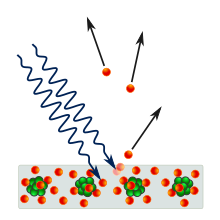

Two generalized coordinates, two degrees of freedom, on curved surfaces in 3d. Generalized coordinates are paired with generalized momenta to provide canonical coordinates on phase space. If these parameters are independent of one another, the number of independent generalized coordinates is defined by the number of degrees of freedom of the system.

The adjective "generalized" distinguishes these parameters from the traditional use of the term coordinate to refer to Cartesian coordinates: for example, describing the location of the point on the circle using x and y coordinates.Īlthough there may be many choices for generalized coordinates for a physical system, parameters that are convenient are usually selected for the specification of the configuration of the system and which make the solution of its equations of motion easier. The generalized velocities are the time derivatives of the generalized coordinates of the system.Īn example of a generalized coordinate is the angle that locates a point moving on a circle.

This is done assuming that this can be done with a single chart. These parameters must uniquely define the configuration of the system relative to the reference configuration. In analytical mechanics, the term generalized coordinates refers to the parameters that describe the configuration of the system relative to some reference configuration.


 0 kommentar(er)
0 kommentar(er)
